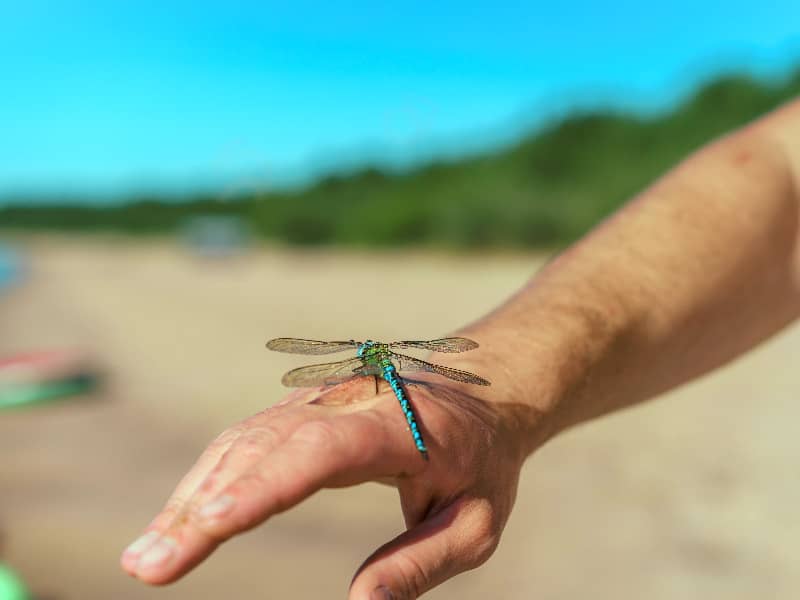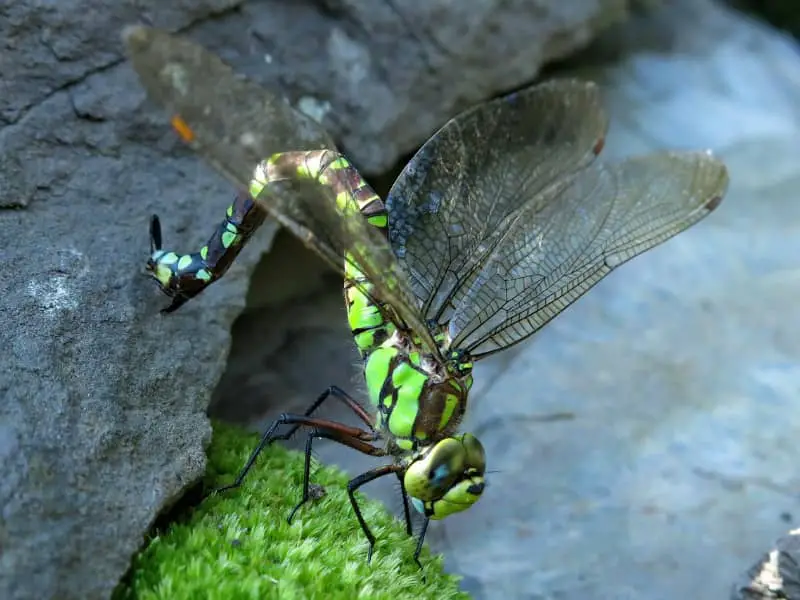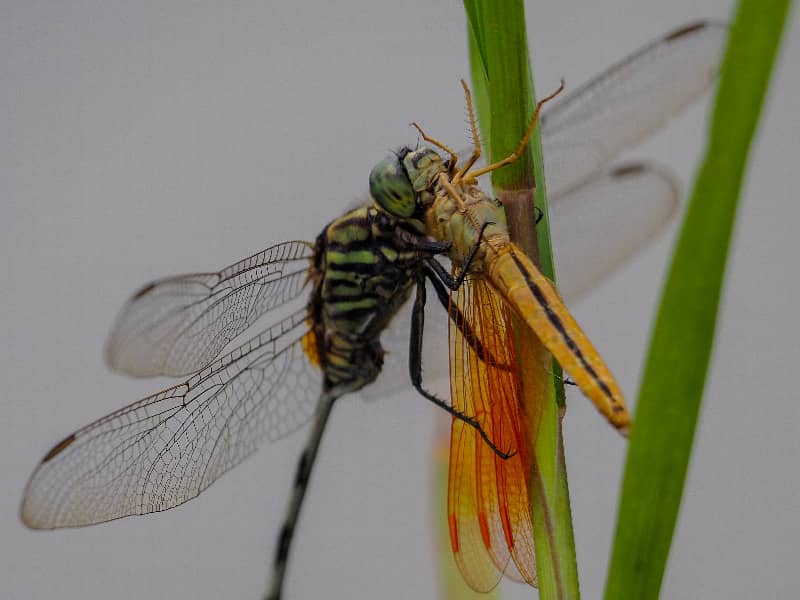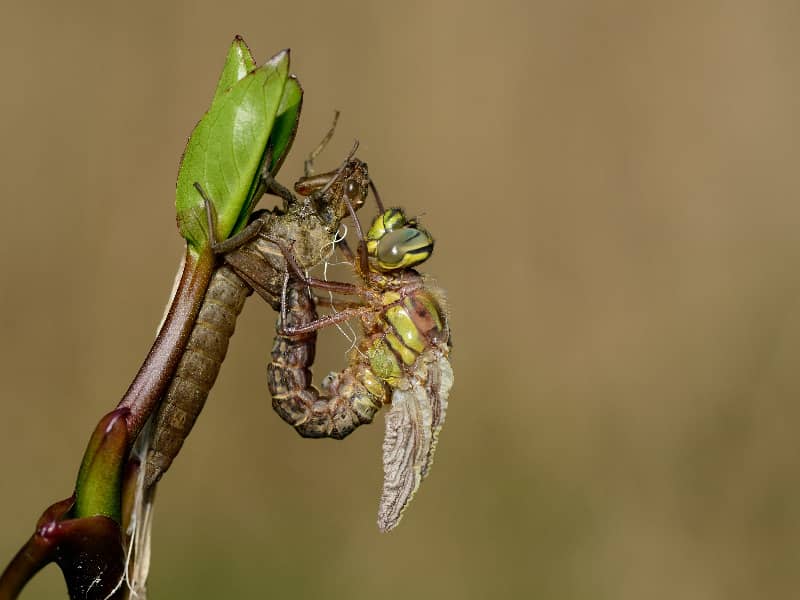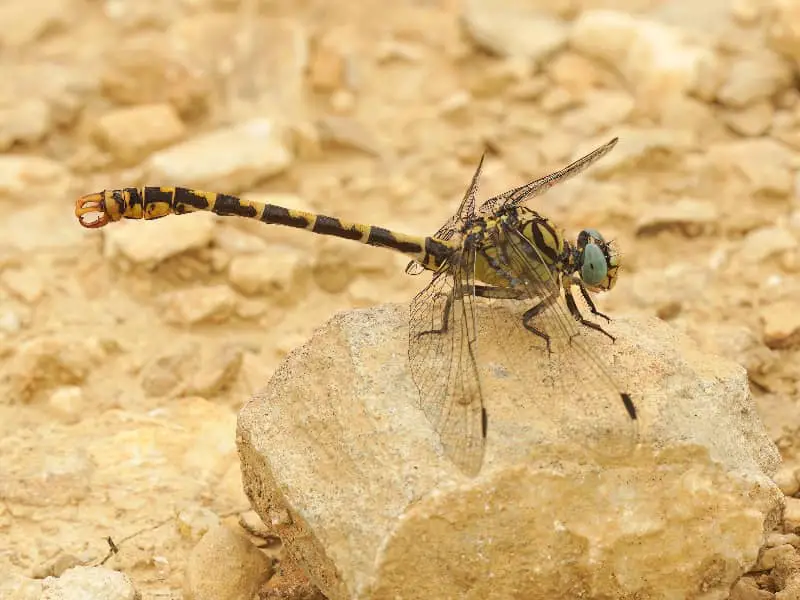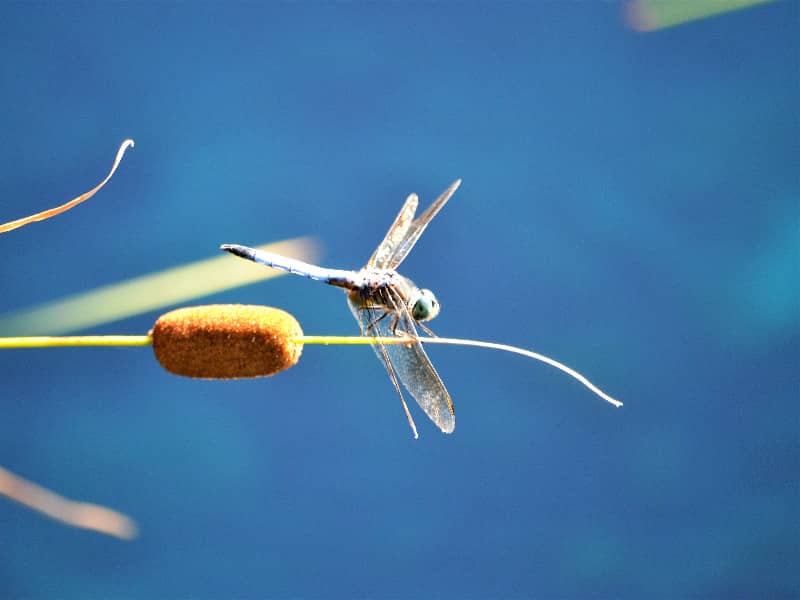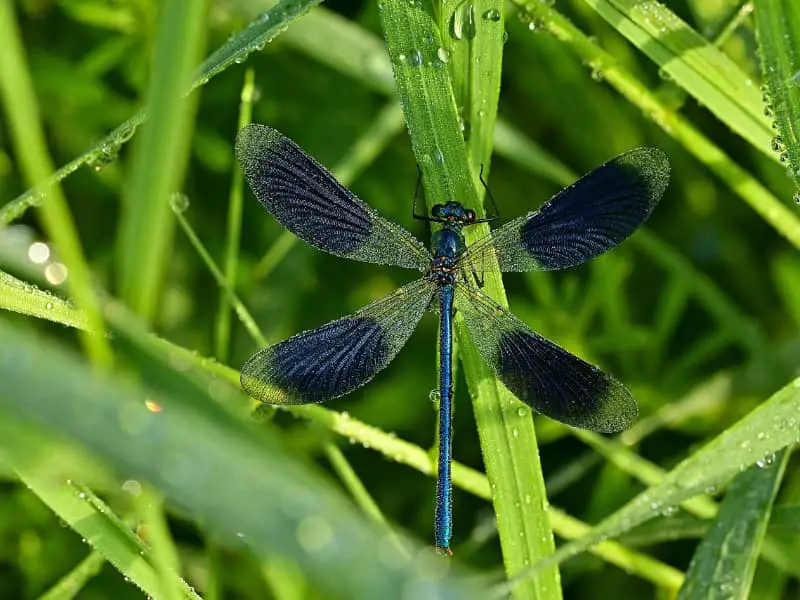
Banded Darter
Welcome to an exciting adventure into the fascinating world of the banded damselfly! These beautiful insects are known for their impressive physical features and interesting behavior. In this article, we will take an in-depth look at the banded damselfly and learn all about them. Get ready to discover the secret of these fascinating creatures!
- Banded Darter
- Physical characteristics of the banded damselfly
- Habitat and distribution of the banded damselfly
- Life cycle of the banded damselfly
- Behavior and feeding habits of the banded damselfly
- Interesting facts about the banded damselfly
- How do you recognize and identify the banded damselfly?
- Profile of the banded damselfly
- Conclusion
Physical characteristics of the banded damselfly
The banded damselfly has a unique appearance that sets it apart from other dragonfly species. Its body is slender and long, with striking banded patterns on the wings. The males have a bright blue or green color, while the females are more brownish. The eyes of the banded damselfly are large and conspicuous, allowing them to see well. Their wings are transparent and allow them to fly quickly and agilely. These physical characteristics make the banded damselfly a true jewel of nature.
The banded damselfly also has a distinctive physique. Its abdomen is slender and long, while its head and thorax are strong and well developed. These adaptations allow the damselfly to move skillfully through its environment and catch its prey. Their legs are thin and long, which helps them to hold on to plant stems and move around. All in all, the banded damselfly is a masterpiece of nature!
Habitat and distribution of the banded damselfly
The banded damselfly is found in many parts of the world and inhabits a variety of habitats. It prefers stagnant bodies of water such as lakes, ponds and slow-flowing rivers. This dragonfly species is particularly common in woodlands, wetlands and open landscapes. The banded damselfly is a sign of a healthy habitat and an intact environment.
The banded damselfly is native to Europe, North America and Asia. Their distribution stretches from Scandinavia to North Africa and from the Pacific coast of North America to Japan. This shows how adaptable and successful these fascinating insects are. They have managed to adapt to different environments and reproduce successfully.
Life cycle of the banded damselfly
The life cycle of the banded damselfly is an amazing story of metamorphosis and transformation. It begins with the females laying eggs on plants or other surfaces above the water. The eggs hatch into larvae called nymphs. These nymphs live in the water and feed on small insects and other aquatic organisms.
During this stage of development, the nymphs moult several times to grow and develop further. Finally, the adult nymphs crawl out of the water and climb onto plants or other structures. This is where the last moult takes place and the adult dragonflies emerge from their old skin.
The adult banded damselflies are now ready to spread their wings and take to the skies. They spend most of their lives as flying adults looking for a suitable partner to mate with. After mating, the females lay their eggs and the cycle begins again. The life cycle of the banded damselfly is a wonderful example of the cycles of nature.
Behavior and feeding habits of the banded damselfly
The banded damselfly is a fascinating insect with interesting behavior and unique feeding habits. This dragonfly species is known for its fast and agile flight maneuvers. They can twist and turn effortlessly in the air to catch their prey. The banded damselfly feeds mainly on small insects such as mosquitoes, flies and other flying creatures. They are skillful hunters and use their sharp eyes and quick reactions to catch their prey.
An interesting characteristic of the banded damselfly is its territorial behavior. The males mark their territory and defend it against intruders. They fly in regular patterns around their territory and show their wings to deter other males. This behavior is a fascinating insight into the social structures and mating behavior of these fascinating insects.

Interesting facts about the banded damselfly
The banded damselfly is an amazing creature with many fascinating characteristics. Here are some interesting facts about this dragonfly species:
- The banded damselfly can reach speeds of up to 40 km/h, making it one of the fastest dragonfly species.
- Male banded damselflies often have brighter colors than females to attract females and mark their territory.
- This dragonfly species can live in the water for up to three years in its larval phase before turning into adult dragonflies.
- The wingspan of the banded damselfly can be up to 10 cm, which makes it an impressive sight.
- Banded damselflies are incredibly adaptable and can survive in a variety of habitats, from deserts to mountain lakes.
These are just some of the fascinating facts about the banded damselfly. There is much more to discover and explore!
How do you recognize and identify the banded damselfly?
The banded damselfly has certain characteristics that make it easy to recognize and identify. Here are some tips on how to recognize the banded damselfly:
- Look out for the striking banded patterns on the wings. These patterns are characteristic of the banded damselfly and make it easy to recognize.
- Note the color of the body. Males are usually a bright blue or green color, while females are more brownish.
- Pay attention to the size of the dragonfly. The banded damselfly is relatively small compared to other dragonfly species, with a wingspan of up to 10 cm.
- Pay attention to the dragonfly's behavior. The banded damselfly flies fast and agile and often shows territorial behavior.
By taking these characteristics into account, you will be able to recognize the banded damselfly and distinguish it from other dragonfly species.
Profile of the banded damselfly
Name: Banded damselfly Scientific name: Calopteryx splendens Family: Calopterygidae Habitat: Standing water, woodlands, wetlands Distribution: Europe, North America, Asia Physical characteristics: Slender body, striking banded pattern on wings, bright blue or green color in males, brownish color in females, large eyes Behavior: Fast and agile flight, territorial behavior Food: Small insects such as mosquitoes and flies
Conclusion
The banded damselfly is undoubtedly a fascinating insect worthy of study and admiration. Their unique physical features, interesting behavior and fascinating life cycles make them a true natural treasure. If you are lucky enough to see a banded damselfly in the wild, take a moment to appreciate its beauty and elegance.
The banded damselfly is not only an aesthetic masterpiece, but also an important indicator of the health of water bodies and habitats. By protecting these fascinating insects and preserving their habitats, we are helping to maintain the diversity of nature.
So put on your hiking boots, pack your camera and go in search of the banded damselfly. You'll be amazed at the beauty and secrets you'll discover!
Author
Last posts
- 15. March 2024ChickensRobuster Kunststoffzaun für Hühner – Tipps
- 13 October 2023DragonfliesBlue feather damselfly
- 12 October 2023DragonfliesYellow dragonfly - What are the species?
- 12 October 2023DragonfliesEarly Adonis Damselfly

